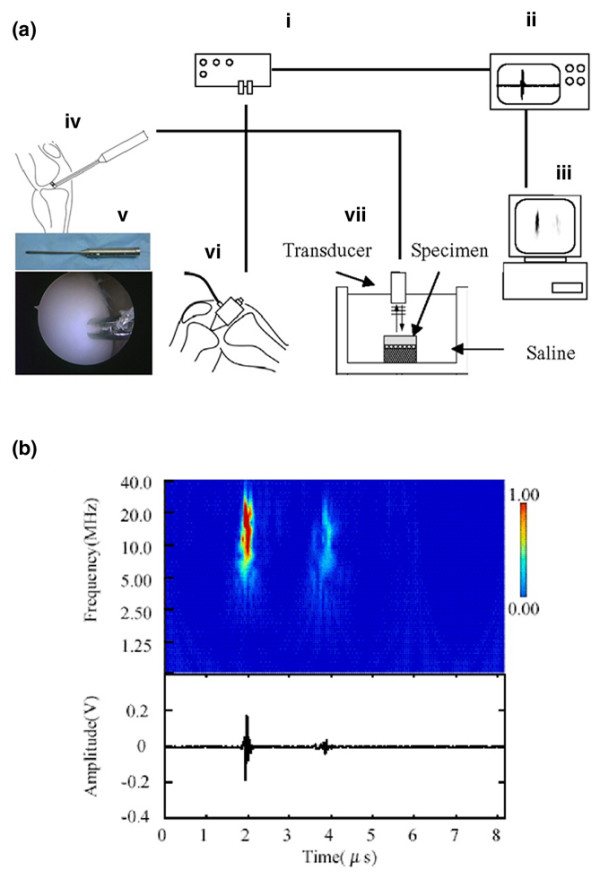Figure 2.

The ultrasound system, typical ultrasound echo and wavelet map. (a) The ultrasound measurement system employed, consisting of a transducer, a pulser/receiver (i), a digital oscilloscope (ii) and a personal computer (iii). The system can be used with arthroscopy (iv, v), open surgery (vi) or a saline bath (vii) for experimental measurement. The ultrasound wave output from the transducer travels through the saline. The reflected waves return to the transducer and generate electrical signals that are proportional to their intensity. (b) Typical ultrasound echo (lower) and wavelet map (upper). The wavelet map was calculated from the ultrasound echo using wavelet transform. The first (left) of the two large-amplitude groups was the echo (t = 2.0 μs: Group N) reflected from the cartilage surface, and the second (t = 3.9 μs: Group K) was reflected from the subchondral bone (right). The signal intensity (as shown by the scale) of Group N is a measure of superficial cartilage integrity. The time interval between Group N and Group K is related to thickness and ultrasound speed of cartilage. The echo duration of Group N is a parameter related to the surface irregularity of cartilage. See [20,30,31].
